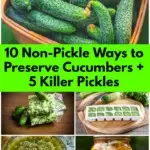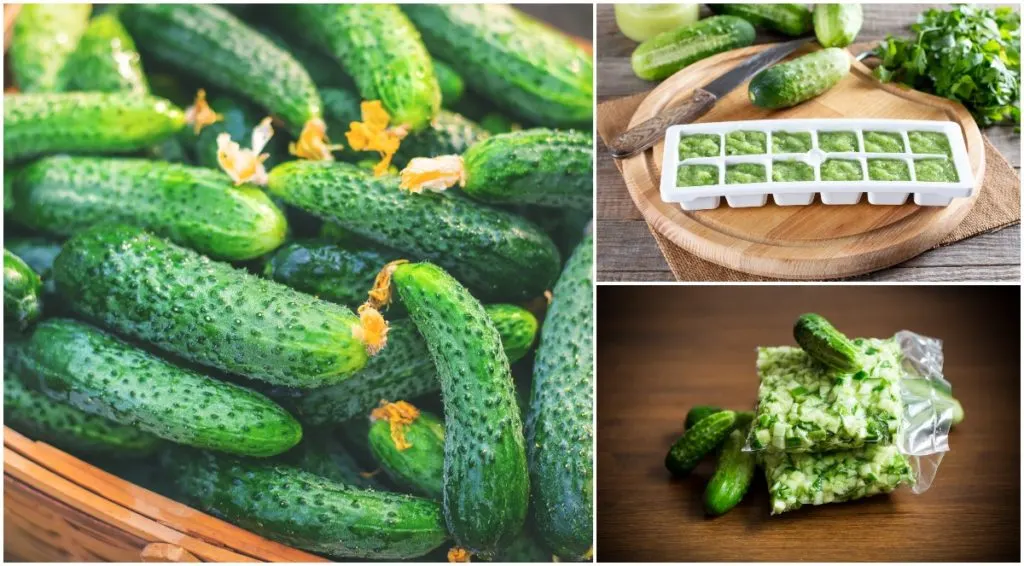
It’s hard to be cool as a cucumber when your garden gifts you with numerous and beautiful cukes, more than you can eat at once.
For, as we all know, they only survive about one week after harvest in the fridge. Even less if you cut into them.
Cucumbers really are short-lived fruits, though we tend to think of them as vegetables. Even in terms of planting, with most cucumbers reaching maturity after 55-70 days, their window of fresh eating is quite small. This especially rings true when you grow them in your backyard garden.
Yet, somehow cucumbers are available throughout the year, come heavy rains and high snow. Modern agriculture is to praise, or blame, whatever side of the eating seasonally philosophy you are on.
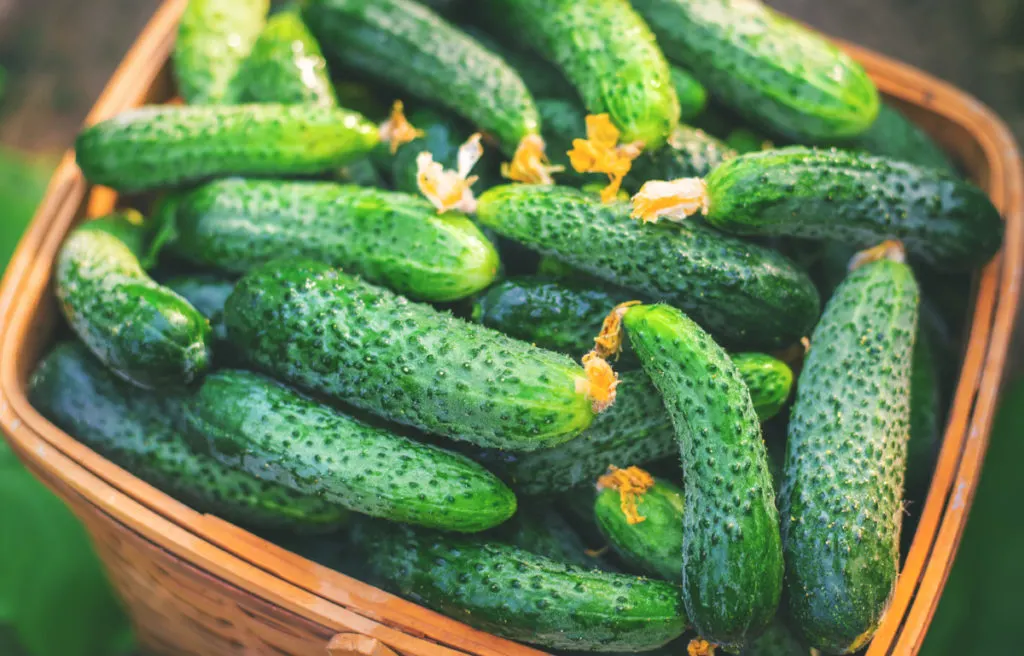
You Need to Know a Little Something About Growing Cucumbers
Before we even begin to look at all the ways to preserve cucumbers, you might want to know a few things about growing them.
For example, why you shouldn’t plant them with aromatic herbs, melons or potatoes.
To embrace the benefits of companion planting, here’s what you should plant with your cucumbers instead.
You’ll also want to learn to save your own cucumber seeds. This ensures that you have stock to sow in the ground for the next growing season.
And did you know that you can trellis cucumbers for an even better harvest?
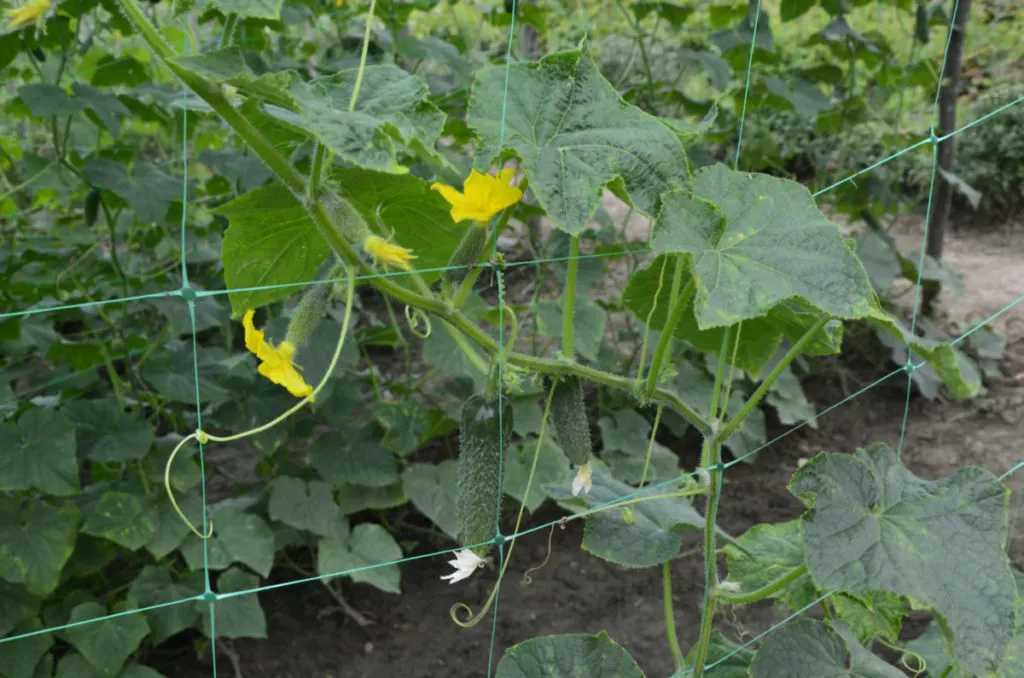
If you have yet to try this technique, be sure to remember it in the spring of next year. It will help you to grow more cukes in less space.
Back to the bountiful harvest…
So, how do you preserve a garden crop that rapidly declines after harvest?
Usually, the first response you’ll get is – pickles. Pickles are good, pickles are great and sometimes they are even mouthwateringly excellent. But, canning them doesn’t always live up to your expectations.
They can get mushy, or are simply without the crunch you’ve come to love and expect. There really is an art to making pickles.
But, that’s not all you can do with cucumbers.
Let’s look at some other ways to preserve them first, then we’ll get back to the beloved pickling spices.
Canning, Freezing, Dehydrating and Fermenting Cucumbers
There are 4 main ways of eating up your cucumber harvest, outside of devouring them in raw form. Each are practical in their own way.
What makes cucumbers one of the more difficult garden crops to preserve, is their high water content. This puts some people off on attempting to “save them for later”, yet it is possible. Below are a variety of ways in which you can save the harvest for a later date.
What is a winter meal without a hint of summer?
1. Cucumber Salsa
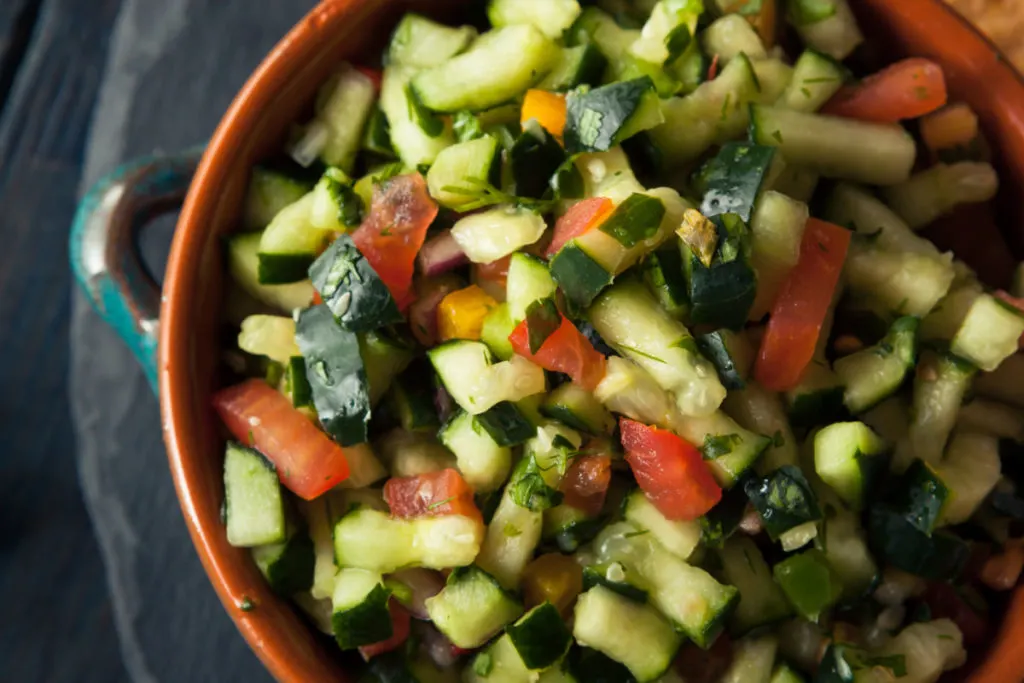
Not a summer goes by that we don’t can salsa, usually of the green or red tomato kind.
This, is not that kind, not exactly. See, in order to make salsa can-able, it needs to have a certain acidity. If you add a lot of vinegar to salsa, you are sort of back to canning pickles or inventing pickled salsa. Which is okay, if that is the flavor you are going after.
But, you can freeze this cucumber salsa when all is said and done. So it works well in terms of cucumber preservation.
First, you’ll have to eat it fresh with a bowl of tortilla chips and see how much is actually left to toss in the freezer.
Here’s a cool cucumber recipe to get started with.
2. Cucumber Relish
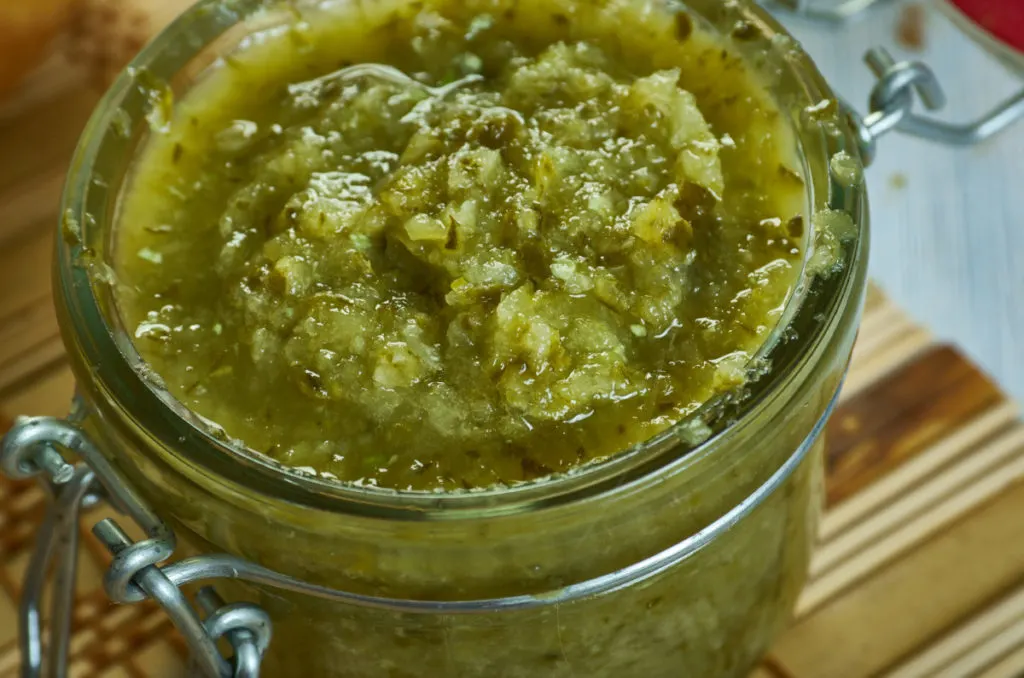
If it’s not salsa, it must be a relish.
Truth be told, relishes are a staple in our pantry. With enough zucchini to fill more than 50 jars, it just fits better this way.
If you’re looking for more of a condiment recipe, something delicious to plop on your sausages or hamburgers, sweet cucumber relish is just what a cucumber desires to become.
I can’t say that I’ve ever made it, yet my saliva is activated and my jars are ready for when cucumbers are in abundance. Based on reader comments, people really seem to like it. Perhaps you will too.
3. Cucumber Mint Jam
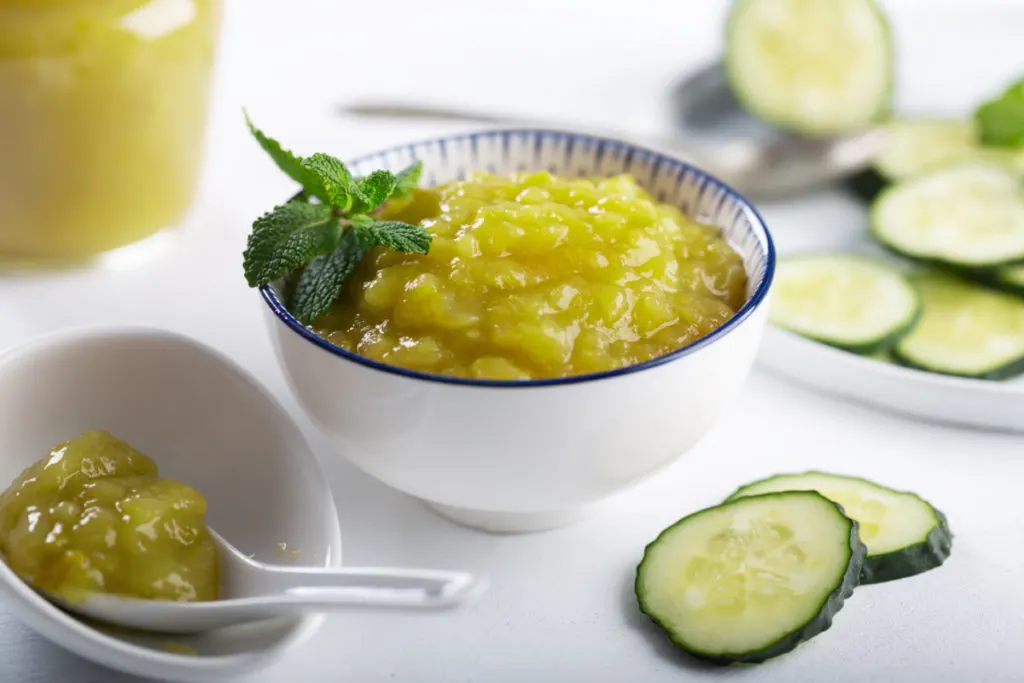
If you are searching for the obscure, the unusual or most unique way of using up several cucumber misfits, toss them in a pot with unexpected ingredients.
To make an entertaining (for guests and your mouth) cucumber mint jam, you’ll need to round up:
- pickling cucumbers
- lemon juice
- apple cider vinegar
- sugar
- powdered pectin
- and fresh mint
What else do you need to know? It’s a sweet-savory snack, suitable for leftover turkey sandwiches, it can be spread on crackers, or mixed in yogurt. Yum. Try it.
Stir up the recipe with advice from Homespun Seasonal Living: Cucumber Mint Jam
4. Cucumber Infused Vinegar
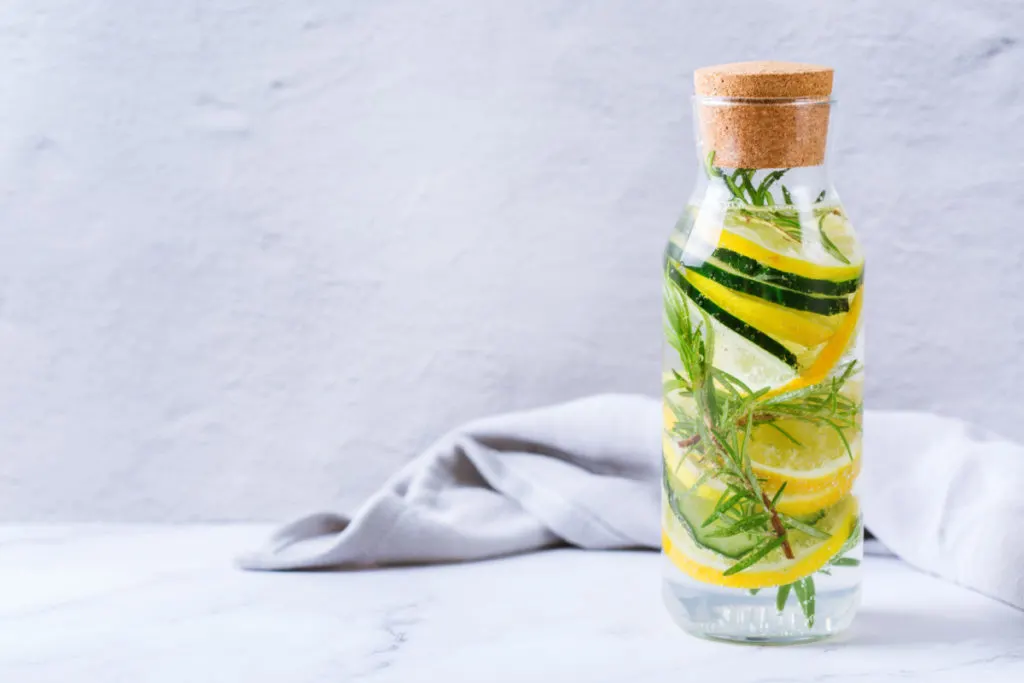
In our pantry, there is always a batch of infused vinegar to reach for when it comes time to concoct a salad. Mostly, we forage for wild herbs to add to the apple cider vinegar: dandelion, plantain, nettle, alfalfa, raspberry leaf and so on.
Only recently have I heard about making peppered cucumber infused vinegar, and I am intrigued.
It’s so simple to make as you toss all ingredients in a large glass jar and wait for 6 weeks for the flavors to meld. That’s it. In the end, you have a lovely homemade product that can be added to delicious salad dressings.
If it turns out well, you could even filter it into lovely bottles and give it as gifts to family and friends.
5. Cucumber Infused Vodka, Brandy or Gin
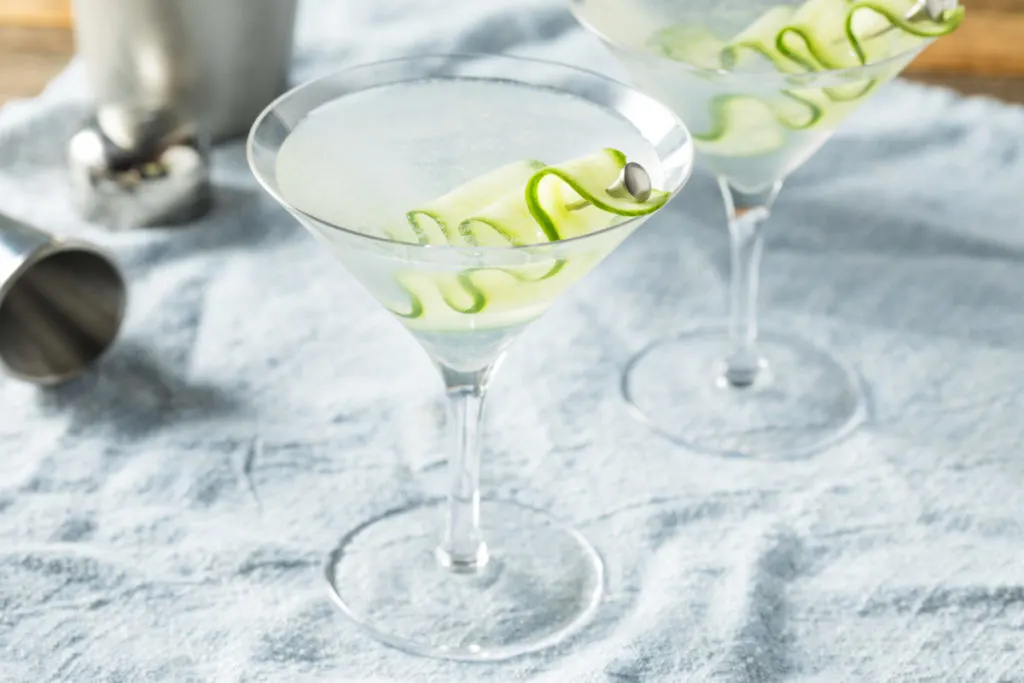
Are you ready to make your summer evenings extra special by indulging in the occasional cucumber martini or a cucumber lime spritzer?
You certainly can, when you know how to conjure up cucumber-infused vodka.
If you adore the flavor of cucumber, you might also want to add it to your lemonade for an alcohol-free drink.
Pop some chunks of cucumber in a blender or food processor and bring them to a pulp. Add it to a glass of sparkling water with simple syrup.
It doesn’t use up too much at once, but if you have a few spare cucumbers left, now you know how to use them in a more refreshing way.
6. Cucumber Kombucha

Three words here: cucumber mint kombucha.
Or cucumber blackberry kombucha.
Even cucumber watermelon kombucha.
If you’re already a kombucha fan, you know what you like about it.
If you aren’t, now might be a good time to pick up a new food hobby.
7. Freezing Cucumbers
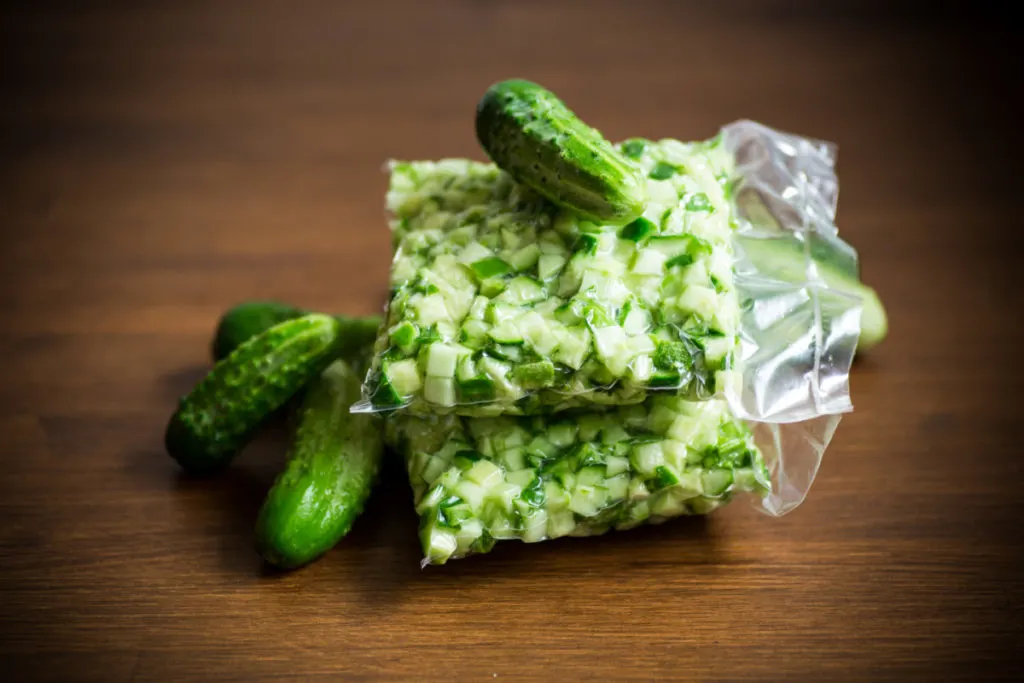
I hear you, the last few recipes were surprising ways to use up a few cucumbers here and there.
But, what if you have a lot of cucumbers to dispense with at the same time?
If you have a freezer, better prepare them for the cold.
Texture-wise, nothing is ever exactly the same after it’s frozen. That’s one of the downsides of freezing, outside of excess energy consumption. Somehow, it shouldn’t surprise you that there will be some texture loss when it comes to freezing cucumbers.
Yet, they won’t be pickles. And that’s a good thing.
Here are the steps you need to follow to successfully freeze your cucumbers:
- Thoroughly wash and dry your cucumbers.
- To peel, or not to peel? Now is the time to do it if you choose. If you attempt to peel a cucumber once it is frozen, you are making life hard for yourself.
- Cut the cucumbers into chunks, slices of bite-sized pieces and line a parchment covered baking sheet with them.
- Freeze for a few hours until solid, then transfer the frozen cucumbers to a freezer bag or jar for long term storage.
Defrosting your frozen cucumbers comes with another challenge, which can be overcome by the way in which you use them in cooking.
Very simply, you can toss the frozen chunks of cucumber directly into the blender with all your other ingredients when you make smoothies. This works well for dips too.
If you’d prefer them without so much water, let them thaw in a bowl, in the fridge, then strain off the excess juice.
Another Way to Freeze Cucumbers
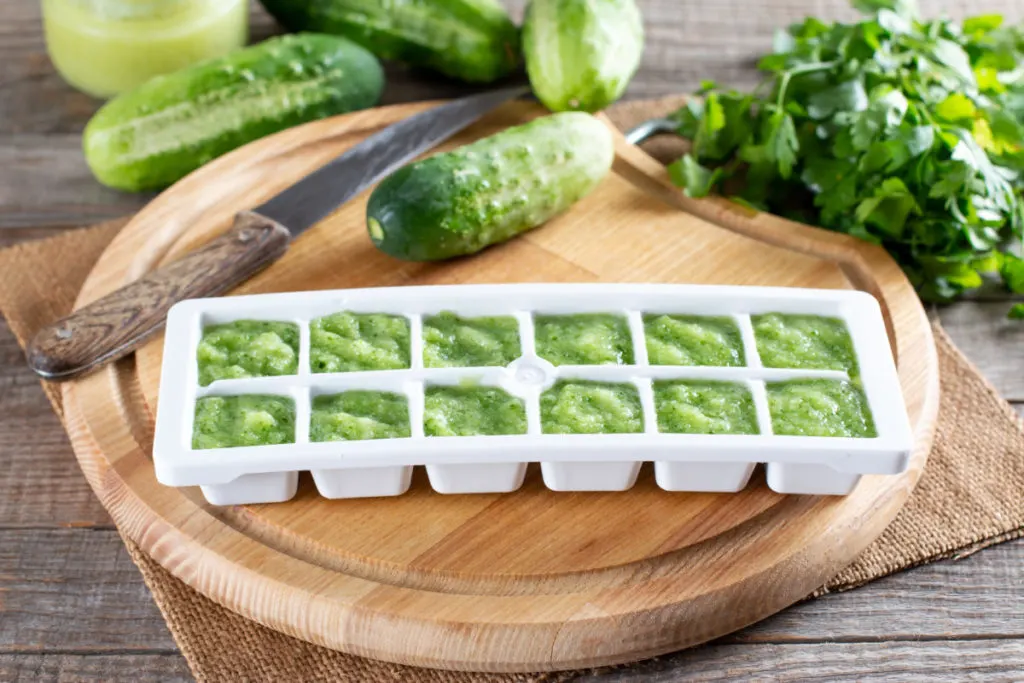
If you’re looking to save precious freezer space, another method of freezing cucumbers is to first blend, then pour them into an ice cube tray and freeze.
The cucumber ice cubes can then be stored in freezer bags. In this way, they are ready for instant use. You can even add a cuke-cube to your morning water.
8. Cucumber Sorbet
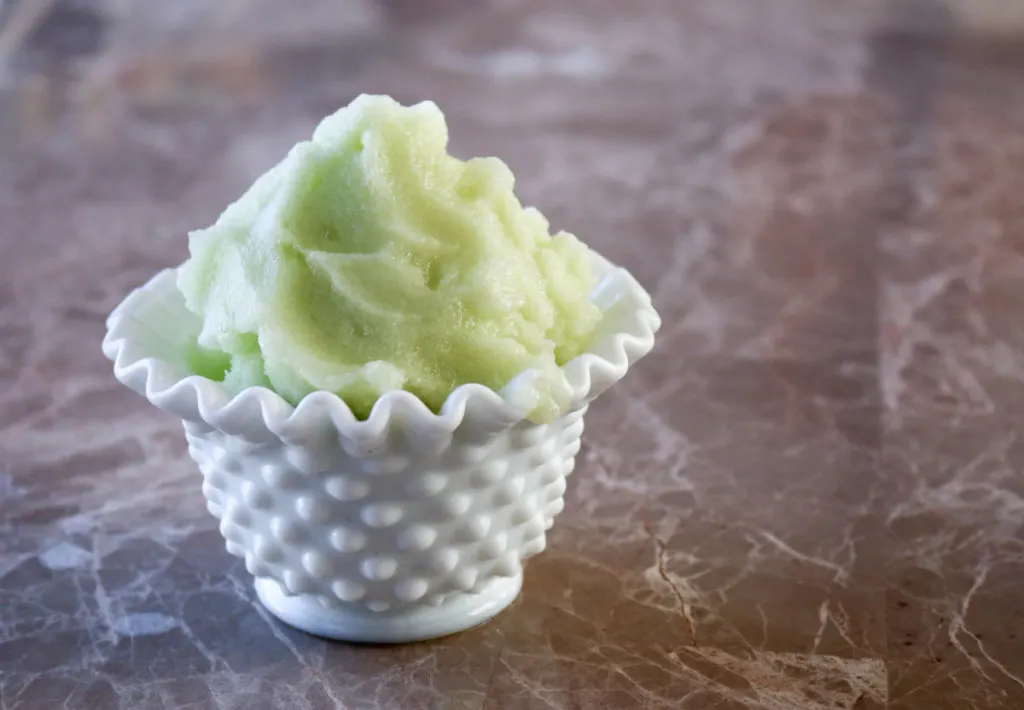
While we are on the topic of freezing fruit, let’s consider a cool cucumber sorbet.
To make 8 servings you’ll need 2 pounds of cucumber, 2 cups of sugar, 2 cups of water and juice/rind of 1/2 an organic lemon.
Make a syrup by bringing the water and sugar to a boil, then peel the cucumbers and remove the seeds before pureeing in a blender or food processor. Mix cucumber puree and syrup together.
One other piece of equipment you will need is an ice cream maker. Which can be used on more than one occasion. You can take that as a hint.
9. Dehydrating Cucumbers
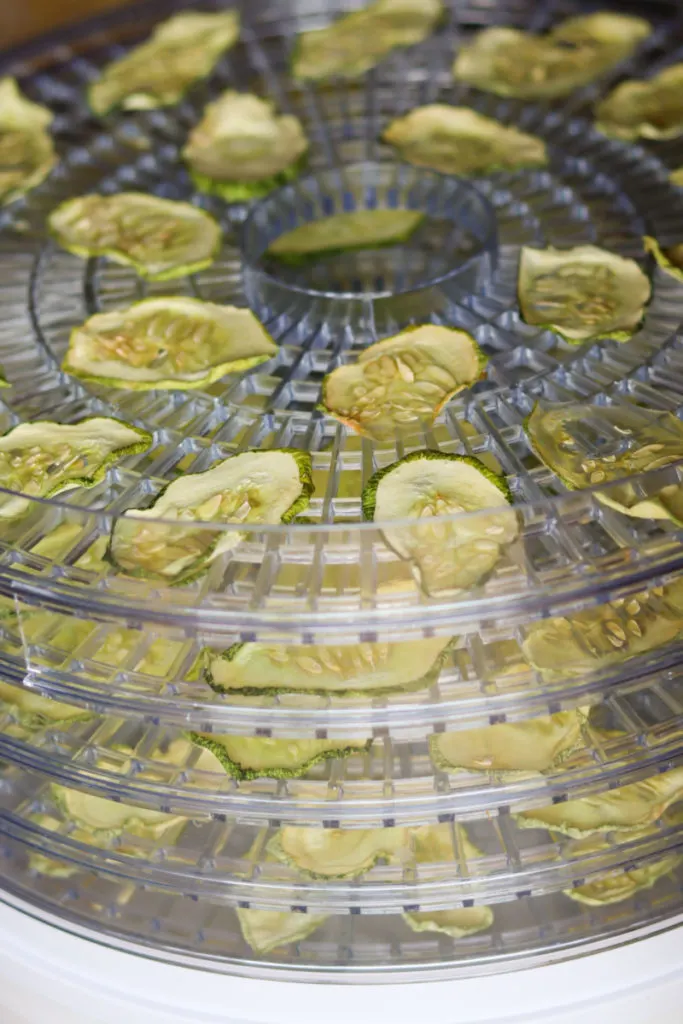
The near opposite of freezing is dehydrating – or the magic act of getting all that water out of the cucumber.
Cucumbers are 96% water!
Yet, they say it can be done. You can, in fact, dehydrate cucumbers, just like with zucchini.
It’s easier to accomplish this with a food dehydrator, rather than using an oven. Just use what you have and keep a watchful eye as they near their ultimate dryness.
Cucumber chips are a fantastic low-carb option, instead of oily potato chips from the store. Here are instructions on how to make salt and vinegar cucumber chips – either baked or dehydrated.
They take about 12 hours to make in the dehydrator, so do get started long before the craving for chips sets in.
Related reading: 3 Ways To Dehydrate Fruit At Home & 7 Delicious Recipes
10. Cucumber Powder
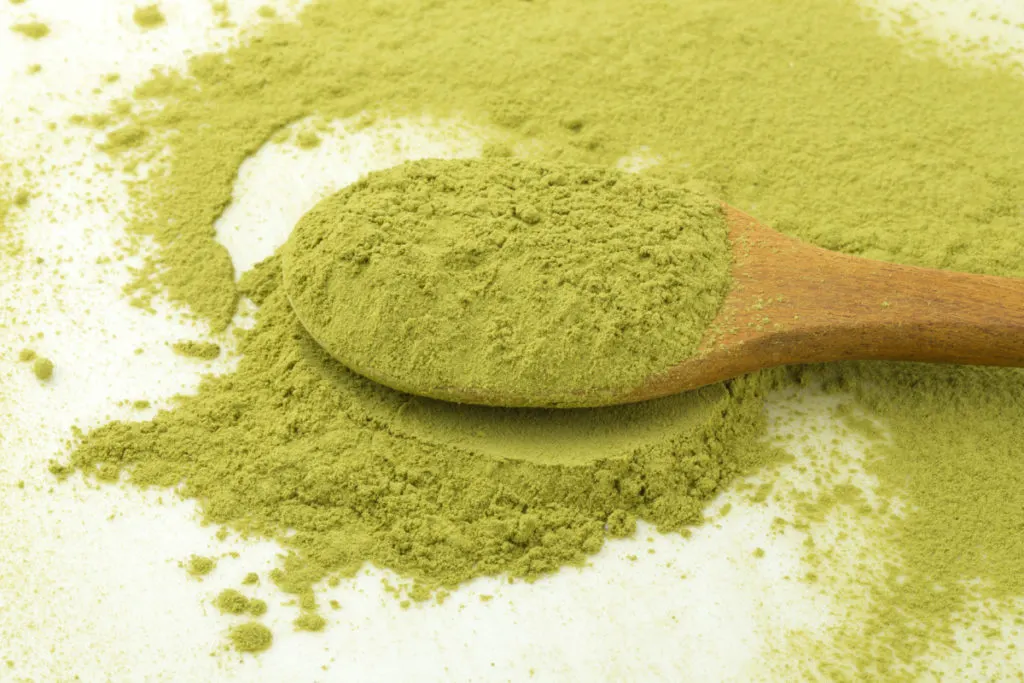
Onion powder, garlic powder, tomato powder, nettle powder and now cucumber powder.
The thing I love about all these powders is the intensity of flavor. They can be added to eggs and bread, sprinkled in soups or hidden in butter. The opportunity to use them up is endless.
Have you ever stirred dried cucumber powder in your homemade ranch dressing?
Make yourself some cucumber powder, so you know exactly what it tastes like.
Temporary Storage of Pickles
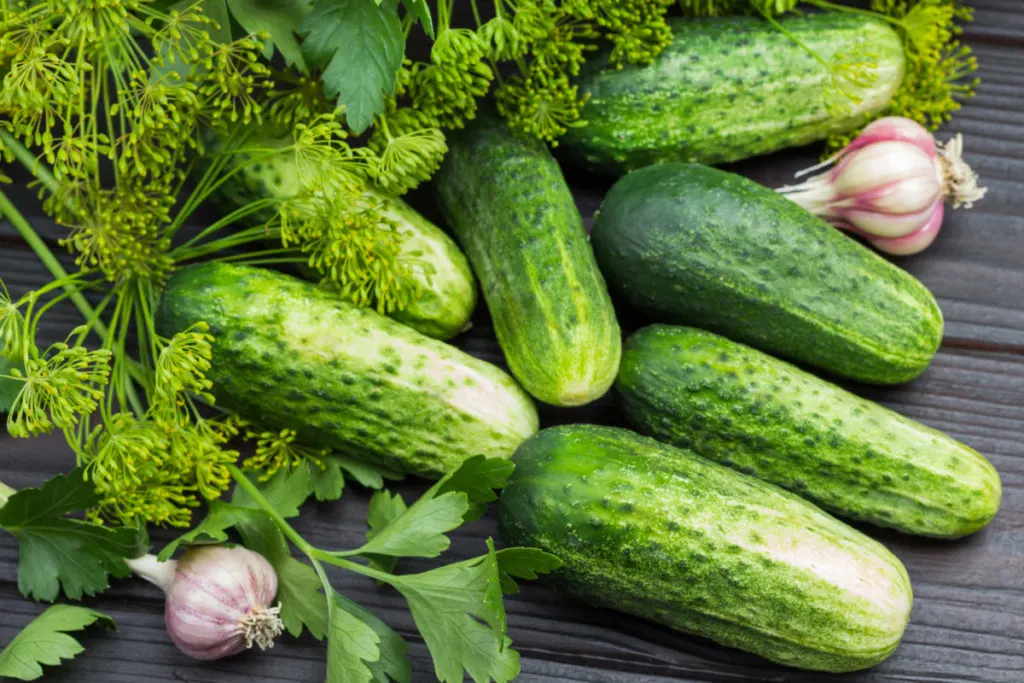
There are two types of pickles for short-term storage of cucumbers: toss them in vinegar solution and the ferment-and-wait plan.
With a lot of cucumbers in the garden, you’ll definitely want to sample them both.
If you’re getting your cucumbers from a market or grocery store, you’ll be able to make them throughout the year.
11. 5-Minute Fridge Pickles
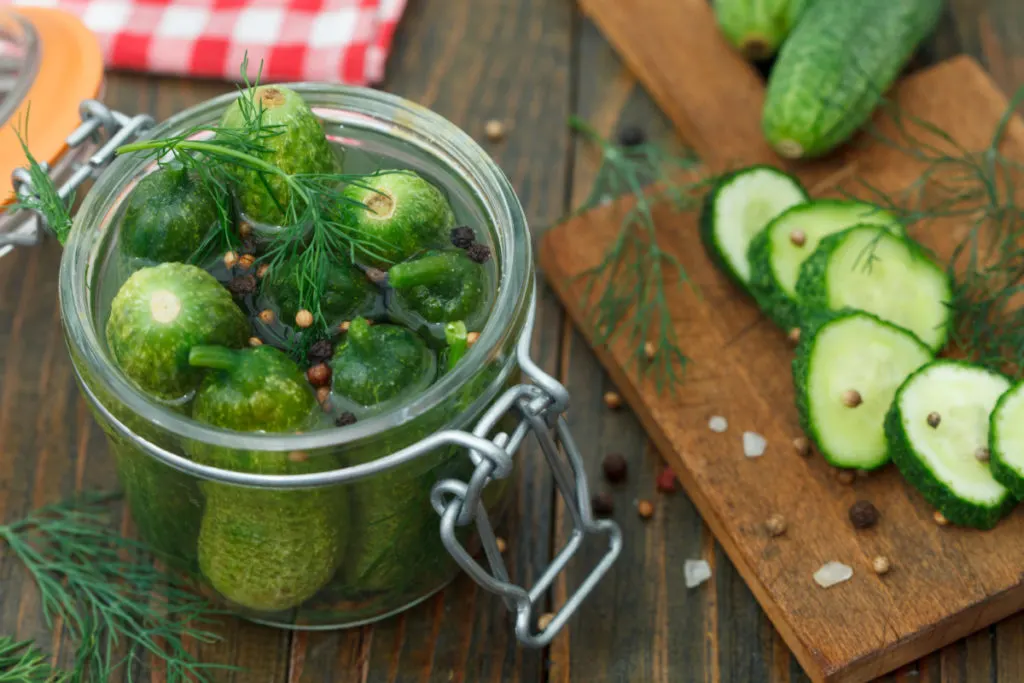
Anytime you add vinegar to anything, you are helping to extend its shelf life. Sometimes by just a day or two, other times by a week.
All you need to make these 5-minute refrigerator pickles is :
- cucumbers
- onion
- garlic
- dill
and for the brine:
- salt
- and spices: peppercorns, red pepper flakes, mustard seeds, coriander, etc.
It only takes a few minutes to transform a plain cucumber into a mouthwatering snack that everyone in the family will want to sink their teeth into.
Plus, it helps the cucumbers last for at least 2 weeks in the fridge. That’s already doubling their shelf life.
12. Fermented Pickles
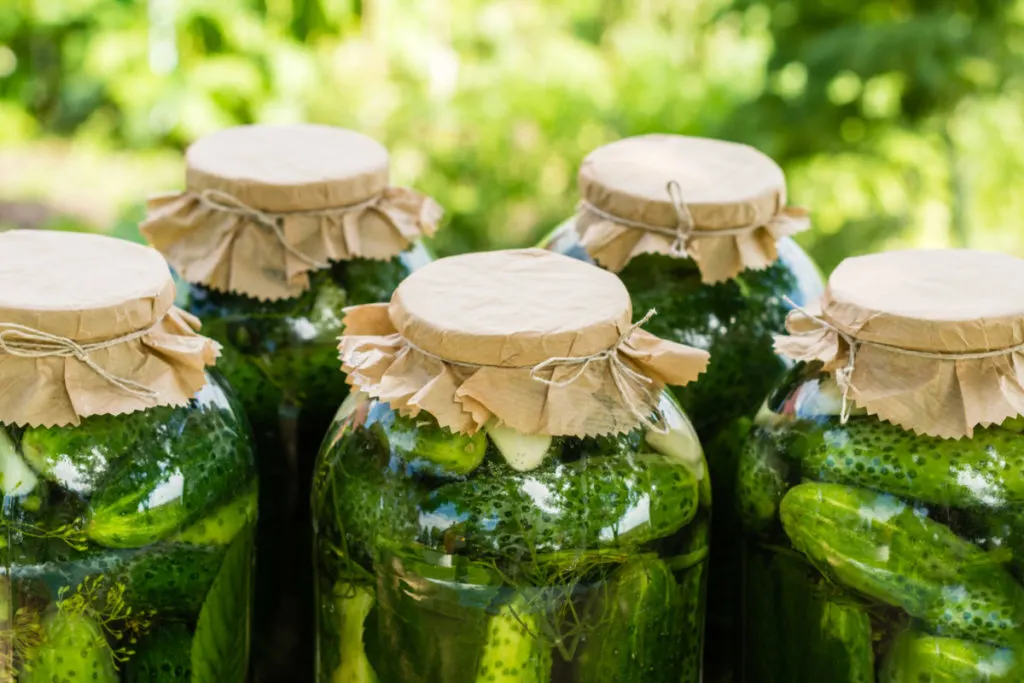
For this recipe, you’ll want to use pickling cucumbers. The small, short and thin ones that are no longer than 6″. Baby pickles, that’s what we’ll call them.
Also of importance here, since they won’t be cut, is that they all need to have a similar size and girth to ferment evenly.
It takes anywhere from 3 to 5 days for the pickles to be ready to enjoy, so it’s not an instant food. However, if you followed the directions to a “P”, you’ll be rewarded with a finely fermented pickle. To slow the fermentation process, place the jar in the refrigerator.
This way, your cucumbers (now pickles) can last for several months in the fridge.
Find the full recipe from Feasting at Home: How to Make Fermented Pickles
Finally, Cucumber Pickles
An article on cucumber preservation wouldn’t be complete without a handful of recipes for pickles.
Stick around for a few more moments if you love pickles of all sorts.
Go ahead and skip to the next article if you prefer a pickle-less life, or just aren’t set up for canning this season, or you’ve already filled all your jars. There’s always another crop waiting to grow.
13. Bread and Butter Pickles
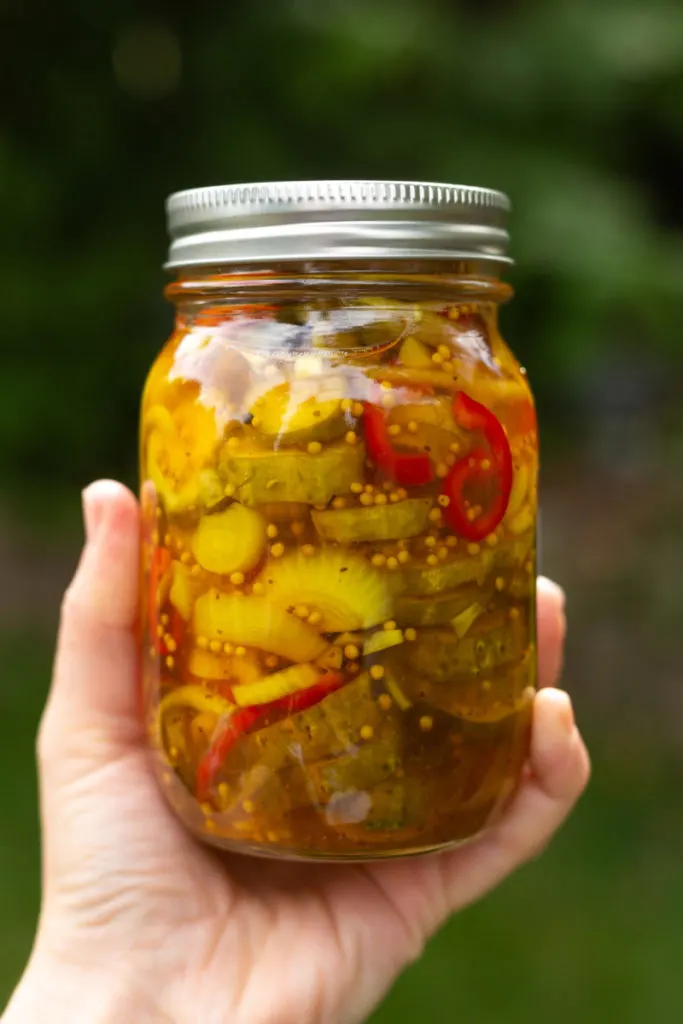
Sweet and tangy, perfect for snacking right out of the jar. That’s what bread and butter pickles are all about.
Without getting into too many details, just know you need several jars, a water bath canner and a few pounds of pickling cucumbers to get started. You’ll also need a variety of pickling spices:
- yellow and brown mustard seeds
- celery seed
- ground turmeric
- black peppercorns
- dill seeds
- coriander seeds
- red pepper flakes
Whatever it is that you, and your family, like best.
Pickle recipes abound online, here are a few to salivate over:
- Granny’s Bread and Butter Pickles Recipe from Grow A Good Life
- Traditional Bread and Butter Pickles from Practical Self Reliance
- Easy Bread and Butter Pickles from A Farmgirl’s Kitchen
14. Dill Pickles
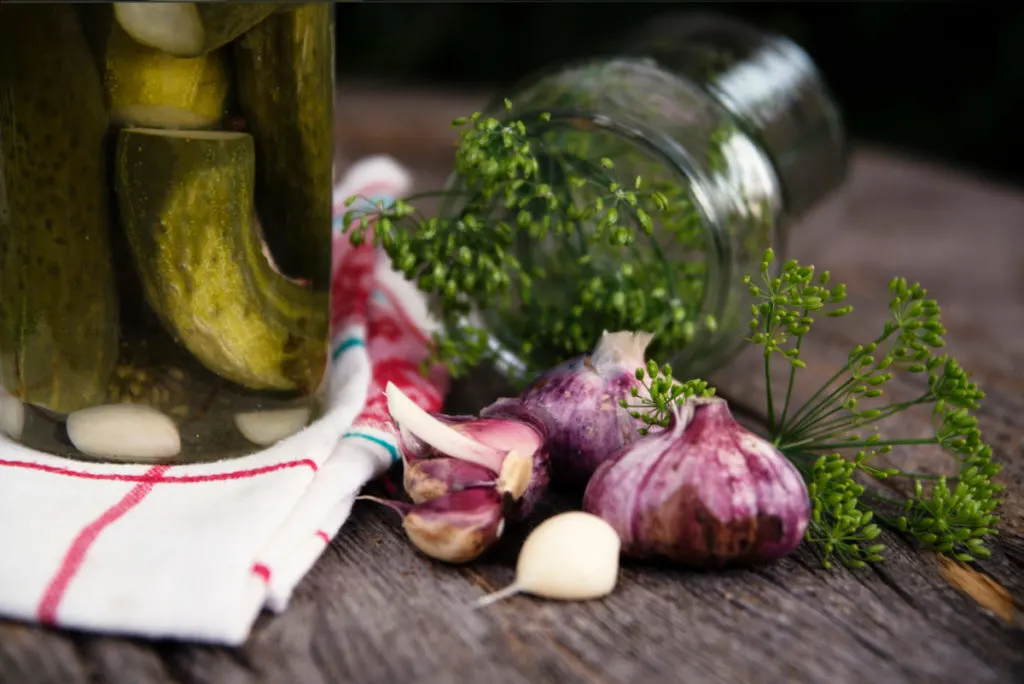
It’s hard to imagine rummaging through a well-stocked pantry and not finding a jar of dill pickles.
To make the best crunchy pickles ever, you’re going to have to follow a formula, one that is tested and true.
The best pickles do not come from the store, they come from your backyard garden:
- Canned Dill Pickle Recipe from Natasha’s Kitchen
- Grandma’s Dill Pickles from Taste of Home
- How to Make Dill Pickles from The Kitchn
15. Spicy Garlic Pickles
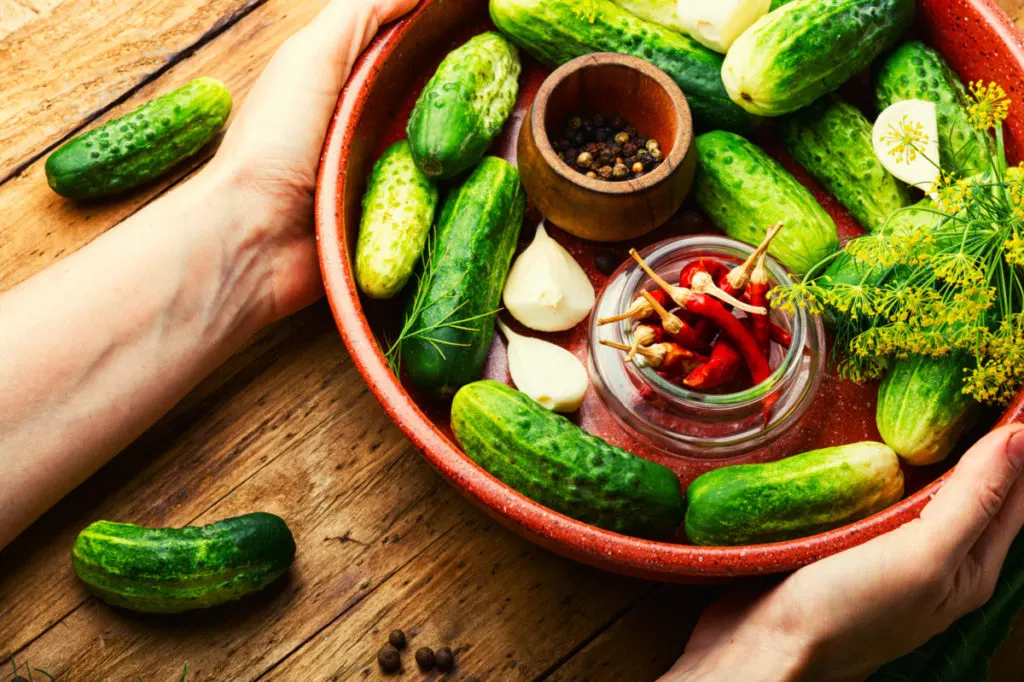
Some people like their pickles with a spicy kick. One that treats the tongue to microscopic explosions of flavor.
If you need a little extra spice to keep you warm in winter, a set of spicy garlic pickles must make it into your pantry or cupboards.
It’s a thrilling way to use up extra hot peppers.
Try out these spicy recipes and share them with your friends:
- Killer Spicy Garlic Dill Pickles from Foodie Crush
- Hot and Spicy Garlic Dill Pickle Recipe from Old World Garden Farms
There you have it – 15 ways to extend your cucumber harvest.
Now, there is absolutely no good reason to let a good cucumber go to waste.

Get the famous Rural Sprout newsletter delivered to your inbox.
Including Sunday ramblings from our editor, Tracey, as well as “What’s Up Wednesday” our roundup of what’s in season and new article updates and alerts.


